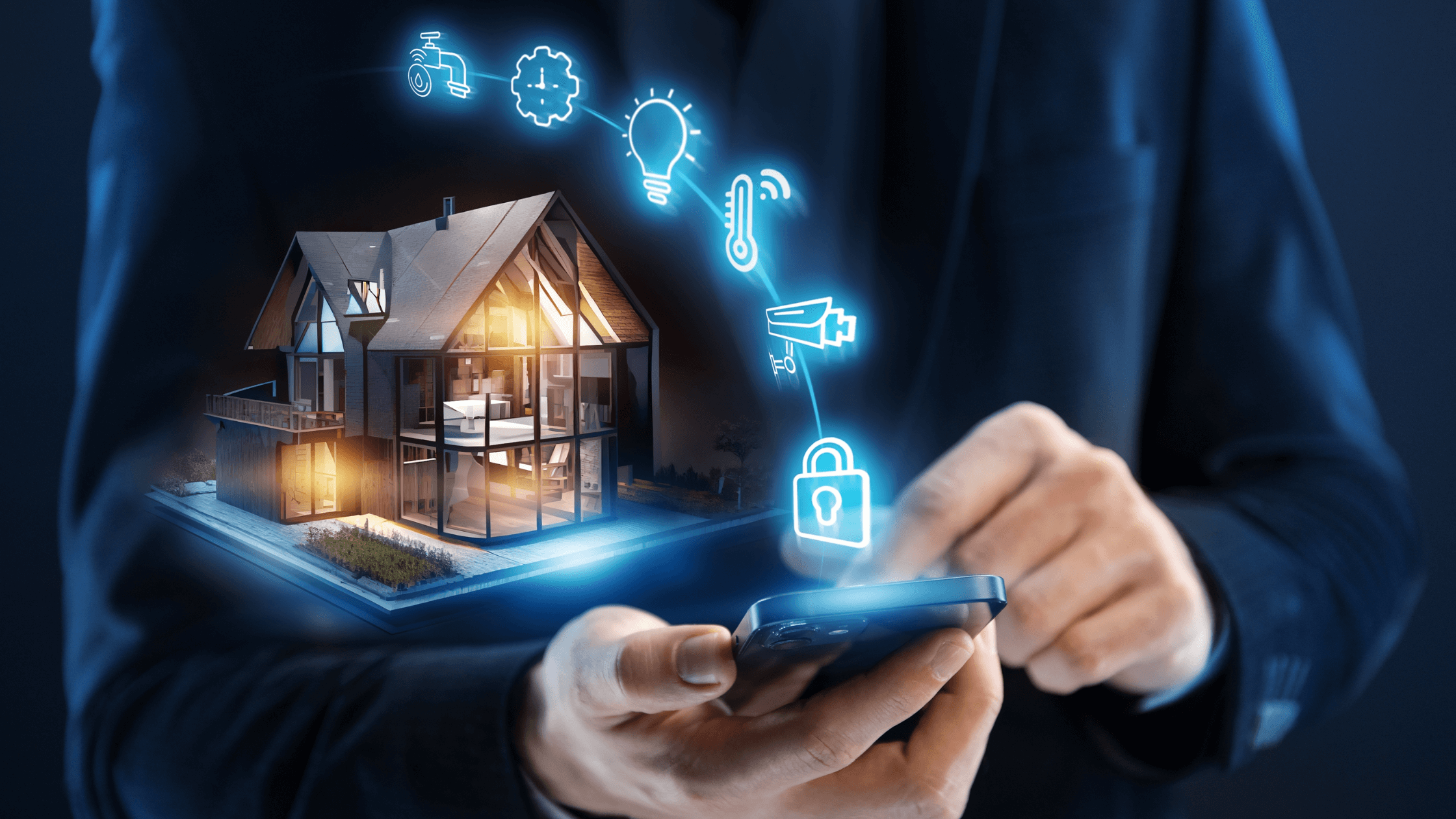In 2025, integrating smart home technology into new constructions is no longer a luxury but a necessity. Homebuyers increasingly seek residences equipped with advanced devices that enhance convenience, security, and energy efficiency. From smart lighting systems to intelligent refrigerators, these technologies transform how we interact with our living spaces. Builders incorporating features like smart thermostats and security systems not only meet consumer demand but also gain a competitive edge in the market.
Quick look
- Smart homes utilize internet-connected devices for remote management of household systems.
- Smart devices operate through centralized hubs, enhancing user convenience.
- Builders incorporating smart technology meet consumer demand and increase property value.
- Essential smart home devices include smart lighting, thermostats, and security systems.
- Integrating smart technologies into buildings offers benefits like energy efficiency and enhanced security.
What is a smart home?
A smart home is a residence equipped with internet-connected devices that enable remote monitoring and management of various household systems, such as lighting, heating, and security. This technology, often called home automation, provides homeowners with enhanced security, comfort, convenience, and energy efficiency. The concept of smart homes has evolved significantly since its inception, transitioning from basic automation systems to sophisticated networks of interconnected devices. Early home automation focused on simple tasks like setting timers for lights or appliances. Today, advancements in the Internet of Things (IoT) have expanded capabilities, allowing devices to communicate seamlessly and perform complex functions autonomously.
For homeowners, smart home technology offers numerous benefits. It allows for efficient energy management by optimizing heating and cooling systems, leading to cost savings. Security is enhanced through smart locks and surveillance systems that can be monitored remotely. Additionally, the convenience of controlling household functions via smartphones or voice commands adds a layer of ease to daily routines.
How do smart home devices work?
Smart home devices connect to a central hub or network, often called a smart home hub. This hub serves as the command center, allowing devices to communicate with each other and be controlled by the homeowner through a single interface, such as a smartphone app or voice-activated assistant. Devices utilize wireless communication protocols like Wi-Fi, Bluetooth, Zigbee, or Z-Wave to transmit data and receive commands. For instance, a smart thermostat can detect the homeowner’s presence and adjust the temperature accordingly, while smart lighting systems can be programmed to turn on or off based on occupancy or time of day.
Why homebuilders need to incorporate smart technology into new builds
Integrating smart technology into new homes has become a significant selling point in today’s market. Consumers increasingly expect modern homes to come equipped with smart features that offer enhanced convenience, security, and energy efficiency. For home builders, incorporating these technologies meets consumer demand, adds value to the property, and differentiates their offerings in a competitive market.
The benefits of integrating smart home technology include:
- Increased energy efficiency: Smart thermostats and lighting systems reduce energy consumption.
- Enhanced security: Smart locks and surveillance systems provide real-time monitoring.
- Improved convenience: Voice-controlled assistants and automation simplify daily tasks.
- Higher property value: Homes with smart technology are more attractive to buyers.
- Future-proofing: Preparing homes for evolving technology trends ensures longevity.
Embracing smart home technology is not just a trend but a strategic move for builders aiming to meet modern consumer expectations and enhance the appeal of their properties.
The best smart home technology

Smart lighting
Smart lighting systems allow homeowners to control their home’s illumination remotely or through automation. These systems can adjust brightness, color, and scheduling to suit various moods and activities. By integrating with other smart devices, lights can respond to voice commands or adjust based on natural light availability, enhancing both convenience and energy efficiency.
Smart refrigerator
Smart refrigerators come with touchscreens and internet connectivity, enabling features like inventory tracking, recipe suggestions, and expiration date alerts. Some models allow users to view the contents remotely via internal cameras, making grocery shopping more efficient. These appliances can also integrate with other smart home systems to create a cohesive kitchen experience.
Smart TV
Smart TVs connect to the internet, offering access to streaming services, apps, and web browsing. They often come with voice control capabilities and can integrate with other smart devices, allowing users to control home functions from their TV screen. This connectivity provides a centralized entertainment hub with enhanced user interaction.
Smart door locks
Smart door locks offer keyless entry options, such as biometric recognition, keypad codes, or smartphone control. They enhance home security by allowing homeowners to monitor and control access remotely. Features like temporary virtual keys can be granted to guests, and integration with other smart home systems enables automated locking schedules.
Smart thermostat
Smart thermostats learn user preferences and adjust heating and cooling accordingly, optimizing energy usage. They can be controlled remotely and provide insights into energy consumption patterns. Maintaining optimal temperatures efficiently contributes to cost savings and environmental sustainability.
Smart security cameras
Smart security cameras offer real-time monitoring and alerts, accessible via smartphones or other devices. Features include motion detection, night vision, and two-way communication. Integration with other smart systems allows for comprehensive home security solutions, providing peace of mind to homeowners.
Smart speakers
Smart speakers, equipped with virtual assistants like Amazon’s Alexa or Google Assistant, respond to voice commands to play music, provide information, and control other smart devices. They serve as a central hub for home automation, enabling hands-free control and seamless integration with lighting, security systems, and thermostats. With features like routines and voice recognition, they can personalize responses based on who is speaking, making daily tasks even more convenient.
Smart smoke and carbon monoxide detectors
Smart smoke and carbon monoxide detectors provide instant alerts to homeowners through their smartphones, ensuring safety even when no one is home. These devices offer real-time monitoring, self-testing features, and integration with other smart systems, such as unlocking doors for emergency responders. Some models can differentiate between types of smoke, reducing false alarms from cooking. By providing early warnings and remote notifications, these detectors enhance household safety.
Smart irrigation systems
Smart irrigation systems optimize lawn and garden watering using weather data and soil moisture levels to adjust schedules automatically. They prevent overwatering, save money on water bills, and promote healthier plant growth. Homeowners can control these systems remotely, making yard maintenance easier and more efficient. Integration with smart home hubs ensures seamless operation alongside other automated home functions.
Smart blinds and shades
Smart blinds and shades allow homeowners to control natural light levels with a smartphone, voice command, or preset schedules. Some models adjust automatically based on sunlight, temperature, or time of day to improve energy efficiency. These window coverings enhance privacy and security by giving the appearance of an occupied home, even when the owners are away. They also integrate with other smart systems, such as lighting and thermostats, for added convenience.
Smart appliances
Beyond refrigerators, other smart kitchen and laundry appliances streamline household tasks. Smart ovens can be preheated remotely, and some models offer recipe guidance. Smart dishwashers and washing machines detect load size and adjust water usage for efficiency. These appliances provide remote monitoring, reducing the risk of leaving something running unattended.
Bottom line
Smart home technology is no longer a futuristic concept—it’s an expectation in modern home construction. Homebuyers are looking for convenience, security, and energy savings, and builders who integrate these technologies into new homes have a competitive advantage. Features like smart lighting, security systems, and energy-efficient thermostats enhance daily living and add value to a property.
As technology advances, smart homes will become even more interconnected, making life easier for homeowners. Whether it’s automating everyday tasks or improving energy efficiency, these innovations are shaping the future of residential living. Builders who embrace smart technology today are setting the standard for the homes of tomorrow.
Want to stay ahead of the curve on construction and home innovation? Subscribe to our newsletter at Under the Hard Hat for the latest updates on smart home trends and industry insights!




1 comment